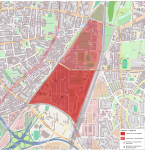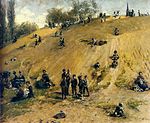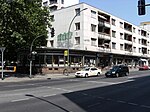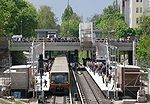Schwerbelastungskörper
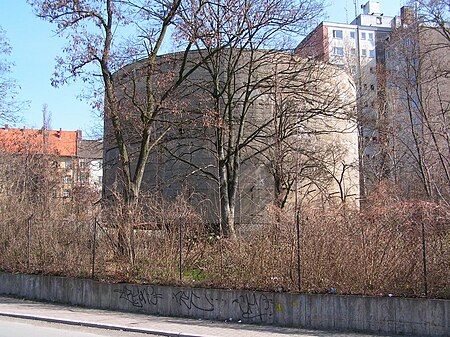
The Schwerbelastungskörper (German: "heavy load-bearing body") is a hefty concrete cylinder located at the intersection of Dudenstraße, General-Pape-Straße, and Loewenhardtdamm in the northwestern part of the borough of Tempelhof in Berlin, Germany. It was built by Hitler's chief architect Albert Speer to determine the feasibility of constructing large buildings on the area's marshy, sandy ground. Erected between 1941 and 1942 it was meant to test the ground for a massive triumphal arch on a nearby plot. The arch, in the style of the Nazi architectural movement, was to be about three times as large as the Arc de Triomphe in Paris. It was one component of a plan to redesign the center of Berlin as an imposing, monumental capital reflecting the spirit of the Nazi Germany as envisioned by Hitler.The Schwerbelastungskörper was built by Dyckerhoff & Widmann AG in 1941 at a cost of 400,000 Reichsmark (adjusted for purchasing power in today's currency around 1.69 million euros, about 2 million US dollars). It consists of a foundation with a diameter of 11 m (36 ft) that reaches 18.2 m (60 ft) into the ground and contains rooms which once housed instruments to measure ground subsidence caused by the weight of the cylinder, which was estimated as equivalent to the load calculated for one pillar of the intended arch. On this foundation a cylinder 14 m (46 ft) high and 21 m (69 ft) in diameter weighing 12,650 tonnes was erected at street level.
Excerpt from the Wikipedia article Schwerbelastungskörper (License: CC BY-SA 3.0, Authors, Images).Schwerbelastungskörper
Jasminpfad, Berlin Tempelhof
Geographical coordinates (GPS) Address Website External links Nearby Places Show on map
Geographical coordinates (GPS)
| Latitude | Longitude |
|---|---|
| N 52.484 ° | E 13.3716 ° |
Address
Schwerbelastungskörper (Großbelastungskörper)
Jasminpfad
12101 Berlin, Tempelhof
Germany
Open on Google Maps


